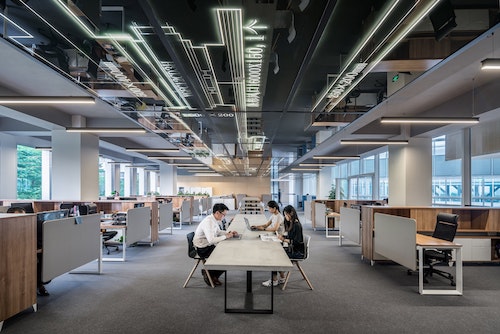The Refurbished Office Furniture Opportunity
Americans dispose of 11.8 million tons of home and office furniture, or nearly five percent of all garbage generated, every year into local waste streams, according to the most recent U.S. Environmental Protection Agency (EPA) estimates. Overall, 80 percent of that waste goes to landfills, most of the remaining waste is sent to incinerators and less than one percent is recycled.
For businesses, the office environment contributes to corporate culture and the energy in the space. Periodically, office managers want to refresh the look and feel of the equipment employees use at work. And while standard accounting practices estimate these assets retain some value for seven years, the objects we use every day: desks, chairs, cubicle walls and file cabinets, can last a decade or more. By the time many office managers are ready to order new furniture, the old models feel dated. Those high, gray cubicle walls that were in style in the 1990s have faded in favor of today’s more open office concepts and lower partitions.
The predominant furniture waste management trend in the U.S., however, misses an important opportunity to replace outdated furniture with remanufactured pieces. Remanufactured furniture costs less than new pieces, and it allows businesses to trade in their dated assets for savings on like-new remanufactured items. The transaction carries a lighter carbon footprint since the production of remanufactured furniture uses less energy and materials than making new pieces. And it benefits the environment by reducing waste disposal.
Not the Same as Recycled
Remanufactured furniture is not used or recycled, it is remade to be like new. In a remanufactured cubicle, for instance, all the old components are disassembled and fully remanufactured to like-new condition, with adjustments for style, updated ergonomics and customer specifications. Nothing is passed through as is. Such a cubicle can use the steel elements from an old cubicle, with lower walls and larger desktop surfaces. Remanufactured chairs and conference tables can be updated with repairs and fresh fabrics or finishes.
Because the process reuses base materials, it is less resource intensive and less costly. A Rochester Institute of Technology (RIT) sustainability study found the remanufacturing process at Davies Office Inc. in Albany, N.Y., used 82 percent less energy than it would take to make the products from all new materials. The study accounted for the energy use for raw materials, manufacturing processes, finishing and transportation for both product types and found the main savings derive from the reuse of steel frames and other parts. Importantly, the RIT study also noted that the remanufacturing process is repeatable. A remanufactured cubicle or chair can be remade multiple times, compounding the benefits of lowered energy use and waste production.
Quantifiable Savings
For some companies, the cost savings involved in purchasing refurbished furniture can make the difference between replacing or not replacing their outdated workstations.
That was the case at Travel and Transport, a travel management company in Omaha, Neb. The company’s senior vice president of operations priced new workstations (cubicles, desk, chairs and file cabinets) at about $4,000 each for 250 employees, which was too costly for the company’s budget. After exploring the option of refurbished furniture made from reused metal parts and frames, with new fabric coverings and finishes, the company found it could get what it needed at half the cost.
Travel and Transport’s leaders also cited other benefits. The new furniture provided a more engaging setting for employees, with shorter cubicle walls that allowed in more natural light from nearby office windows and roomier desk surfaces and workstation spaces. It established a modern office environment that appealed to visiting clients. And the installation of refurbished pieces provided a valuable data point to share with corporate customers who requested information on Travel and Transport’s sustainability efforts.
Travel and Transport’s experience is a positive one, but it’s not unusual. Savings typically range from 20 to 40 percent compared to the cost of new furniture. Trade-ins of used furniture can add to these savings because a refurbishing firm can reuse the base materials.
Prospective buyers of remanufactured furniture should check that their vendor can produce evidence of their sustainability practices. One credential to note is whether the seller adheres to the American National Standards Institute specifications for the remanufacturing process, developed with industry.
Evaluating the option is a worthwhile step to take. As the nation’s waste disposal data shows, the opportunity to replace old office furniture with refurbished models is one that more office managers and purchasing executives could seize. It costs less, it reduces energy use and waste, and it’s just as good as new.
Written by Jake Swenson and William Davies for: waste360.com – see the original article here: https://www.waste360.com/commercial/refurbished-office-furniture-opportunity
Jake Swenson is director of sustainability at Staples. Willam Davis is president of Davies Office.






